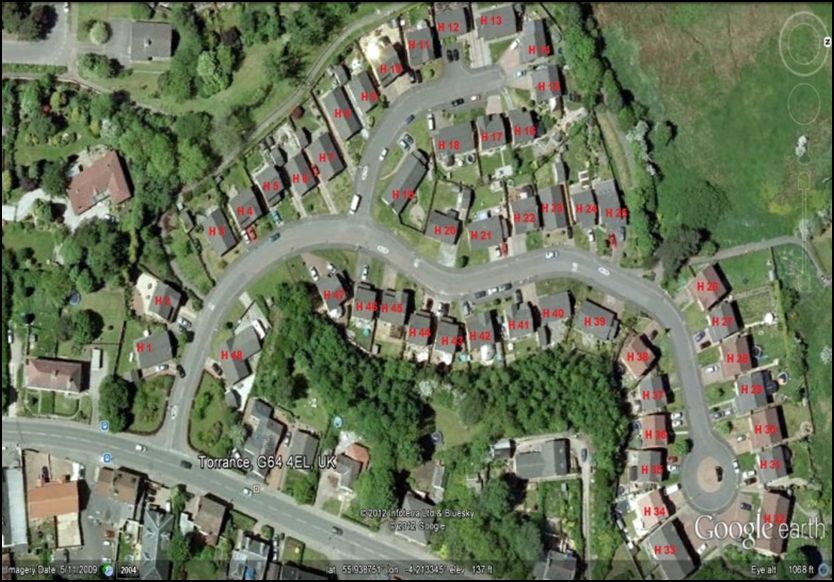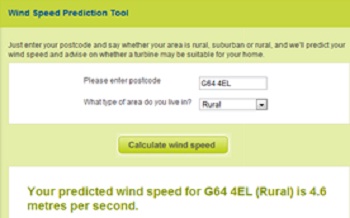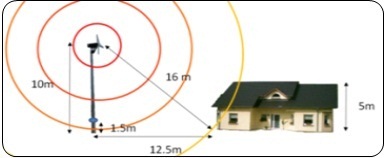Wind Turbine Case Study
Overview
This case study has been chosen to analyse an existing housing estate and determine its suitability for the integration of small scale wind turbines.
The first process is the selection of the site where the study needs to be carried out. The site can be viewed using Google Earth as shown inthe image to the right.
There are a total of 48 houses in the case study, with the houses being both single and double storey. The demand will vary depending on this data and also the kind of heat and electricity system, gas boilers are the system selected for this case study.
Along with Google Earth, an online mapping tool, an online calculator of Wind Speed and the MERIT and HEM Tools will be used to determine the housing heating demand and the related Wind solar capacity. These tools can be downloaded from the Wind Turbine Workflow Tab in the Workflow page of this site. Go to Wind Turbine Workflow

Shown above is a Google Earth image of the housing estate chosen for the Wind Turbine case study.
Technical Feasibility
Using Google Earth, green areas for installation of wind turbines are considered.
The next step is the determination of the wind speed in the area. This value has been obtained through the Department of Energy and Climate Change web site (click here to be taken to the DECC web site
This value is 4.6 m/s (@ 10m) for our case study which is shown in the image below.

The minimum distance to the residential area is calculated by considering the maximum noise admitted during nights which is 35dB (click here to be taken to the information source).
This scheme shows the calculation of the noise levels for depending on the distance to the turbine.
Noise will be propagated in the direction of the wind. We have considered a 5% of increment of noises in the SW direction (the most common one in Glasgow). However, the situation of the turbines in a northern field reduces the affectation by this phenomenon. These distances are shown in the image below.

In order to calculate the distance for the location of the turbines the free mapping tool detailed in the wind turbine workflow was used. The best option for this case study according to the space available and the financial feasibility, is the installation of a unique turbine of 15kW, with a height of 10m.
The demand model was created with HEM. The total number of houses (48) have gas boilers. The demand for this kind of houses is 29.3 KWh /m² per year and a total electrical demand of 201.116,5 KWh /year is required for this residential area.
The supply/demand analysis is carried out with MERIT as detailed in the workflow.
Financial Feasibility
The current tariff for electricity imported from the grid is 12p/KWh and the exported price is 3p/kWh (as per current FIT tariff).
According to the values obtained for the match, the most interesting situation is that with represents a maximum match.
© University of Strathclyde